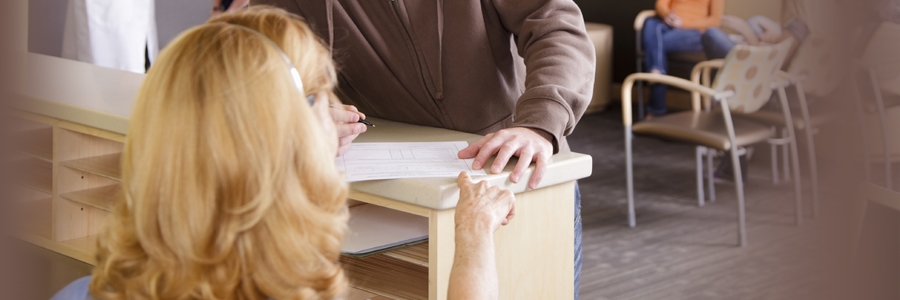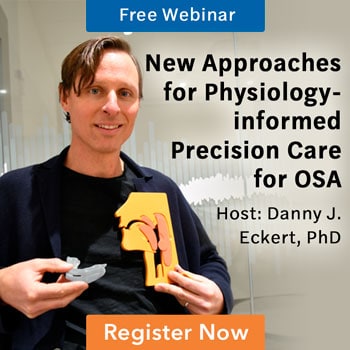
This inaugural issue of Dental Sleep Practice profiles several pioneers in our field. Establishing the practice of dental sleep medicine includes connecting with medical billing, something quite foreign for many dental offices, even today.
From the early days, no one has done more to help bridge this gap in process more than Rose Nierman, RDH, CEO, Nierman Practice Management and DentalWriter™ Software. DSP asked Rose to share some perspective with our readers:
Table of Contents
You’re a pioneer in teaching dentists medical billing skills for sleep apnea appliances. How did you get started?
 A visit to the dentist is not just about your teeth anymore. Dental professionals can now help save lives and assist patients with medical insurance reimbursement for oral appliances for obstructive sleep apnea (OSA). I’ve had the honor of working with dentists who treat orofacial pain and obstructive sleep apnea for many years. Starting around 1980, I was actively billing medical insurance for a progressive dental practice treating temporomandibular disorders (TMD) and sleep breathing disorders and we saw the importance of collaboration with our patients’ physicians. I realized we were treating medical conditions with dental solutions and we wanted to rule out other conditions for our pain patients, so working with physicians became very important. The insurers would reimburse for our services as a medical necessity when the claim was sent with the proper narrative reports. Frankly, not much has changed since then regarding the need for narratives of medical necessity. The first medical billing manual for dentists was written by me in 1988 and many dentists have seen the benefit of assisting patients with medical reimbursement so that their patients can gain access to these important treatments. A need for a system was realized and our developers created DentalWriter™ software in 1990 for medical claims, insurance narratives, documentation and progress reports to physicians.
A visit to the dentist is not just about your teeth anymore. Dental professionals can now help save lives and assist patients with medical insurance reimbursement for oral appliances for obstructive sleep apnea (OSA). I’ve had the honor of working with dentists who treat orofacial pain and obstructive sleep apnea for many years. Starting around 1980, I was actively billing medical insurance for a progressive dental practice treating temporomandibular disorders (TMD) and sleep breathing disorders and we saw the importance of collaboration with our patients’ physicians. I realized we were treating medical conditions with dental solutions and we wanted to rule out other conditions for our pain patients, so working with physicians became very important. The insurers would reimburse for our services as a medical necessity when the claim was sent with the proper narrative reports. Frankly, not much has changed since then regarding the need for narratives of medical necessity. The first medical billing manual for dentists was written by me in 1988 and many dentists have seen the benefit of assisting patients with medical reimbursement so that their patients can gain access to these important treatments. A need for a system was realized and our developers created DentalWriter™ software in 1990 for medical claims, insurance narratives, documentation and progress reports to physicians.
You have a real passion for assisting dentists in helping their patients have access to this important treatment.
It is rewarding and exciting to be on the leading edge of the nationwide explosion and acceptance of oral appliance therapy (OAT) and to be able to work with others in the profession to create change, promote laws, and establish rules regarding insurance reimbursement, which can have a positive effect on the entire profession for years to come.
Snoring and insomnia was something that was laughed off in my family but we all know apnea is no laughing matter and can contribute to depression, cognitive disorder, daytime sleepiness, heart arrhythmia and stroke, all of which affected my father. Sleep-breathing problems became a passion for many of us in the dental profession after observing family members and patients struggle with symptoms that which could have been resolved by consultation with a sleep physician and appropriate treatment.
It makes such a difference in an individual’s life to get diagnosed and treated. Whether the treatment is Continuous Positive Airway Pressure (CPAP), surgery or an oral appliance, it’s exciting that each dentist I work with may add quality years to the lives of hundreds of patients. By helping dentists assist their patients with medical insurance, I can help more individuals than if I worked in one dental office.
How frequently are oral appliances for OSA reimbursed through medical insurance?
A turning point in reimbursement was Medicare’s approval of oral appliances for OSA in January of 2011. Once Medicare approved oral appliances as medically necessary, many commercial insurers developed policies for reimbursement under the category of Durable Medical Equipment (DME). 90 percent of commercial insurers are reimbursing for oral appliances, according to Nierman Practice Management’s 2013 survey of dentists who are billing medical insurance.
Are Medicare and commercial carriers billed the same codes and fees for OAT?
Both Medicare and commercial carriers reimburse for HCPCS code E0486, for a custom-made oral appliance for OSA. There are some differences between commercial carriers and Medicare. Keep in mind in order to bill Medicare for oral appliances, the dentist must enroll as a Medicare DME supplier. Under Medicare guidelines, the patient must have a face-to-face exam with a physician prior to placing an oral appliance and meet other documentation requirements. According to the Medicare Part B contractor Palmetto GBA, Medicare bundles the initial exam and radiographs into the OSA appliance code as figure 1 illustrates. Figure 1 Medicare Jurisdiction 11 Part B Policy
You mentioned that oral appliances for sleep apnea are covered as DME. Are TMD appliances reimbursed as Durable Medical Equipment?
It’s interesting that appliances used to treat TMD are not covered as DME, as a rule. The medical code that is most descriptive for TMD appliances is HCPCS code S8262, defined as Mandibular orthopedic repositioning device, each. This code was placed in the “temporary codes” of the CPT/HCPCS procedure coding manual, not the DME category. Nonetheless, insurance carriers do tend to accept the S8262 for orthotics. It’s important for dentists to know that TMD medical codes beginning with “2” may be considered surgical codes by the insurer for removable orthotics (for example CPT 21110, interdental fixation device).
What’s the most important thing you can pass on to dentists billing medical for OAT?
Document, document, document! If it’s not written down, it doesn’t exist!
Our company created the medical billing and report/letter writing software because we saw a need not only for medical billing, but for documentation. Dentists also need to keep physicians in the loop and send initial reports of findings and progress reports.
SOAP narrative reports are created from an online or paper questionnaire and exam and document patient subjective complaints, objective exam findings, assessment and the plan.
For oral appliances for OSA, documentation also includes a sleep study, the beneficiary’s signature showing proof of delivery, a physician written order and other items required by insurers. For Medicare patients, records are kept on file including documentation that a Medicare approved appliance and laboratory were used.
Medicare’s guidelines, outlined in the LCD for Oral Appliances for OSA, spell out additional specific documentation requirements and should be followed in detail.
What tools do dentists need when billing medical insurance?
Dentists need comprehensive solutions and tools for Dental Sleep Medicine (DSM) that maximize reimbursement while minimizing risk. Medical coding and reimbursement skills are essential to DSM practices as well as systems for documentation and communication with physicians. Getting the word out to patients is an important component and requires a well thought out patient education program.
Providing sleep apnea appliances is a team approach with the physician as the “quarterback” of the team. A diagnostic sleep study and follow up sleep study, after the appliance is calibrated, are needed. Many physicians are impressed with the recent literature concerning the effectiveness of sleep apnea appliances and refer to dentists to provide these appliances for their patients who cannot use CPAP. Physicians may refer more easily to qualified dental practices that are trained to bill medical and help their patients with reimbursement.
It’s important that billing is done correctly and ethically and to have your “ducks in a row”, which is our company motto. The support, care and services provided by Nierman Practice Management is something we want dentists to be able to count on.





